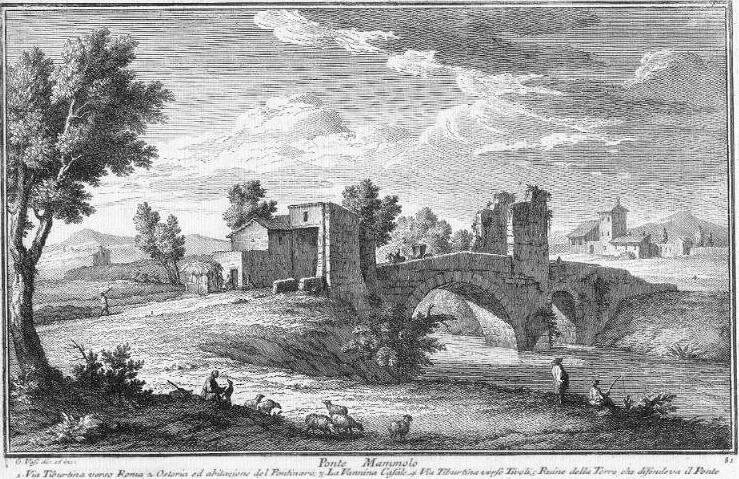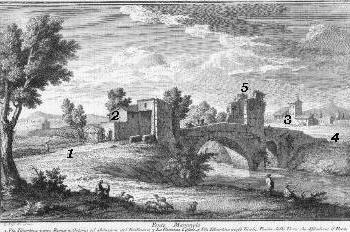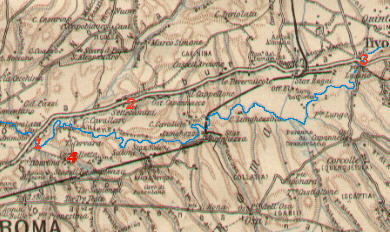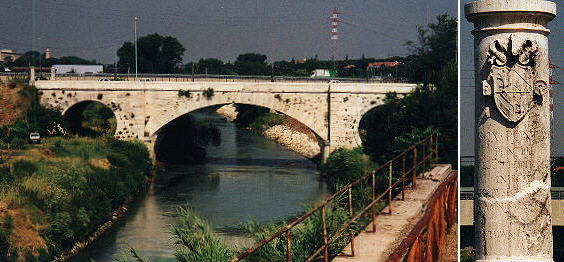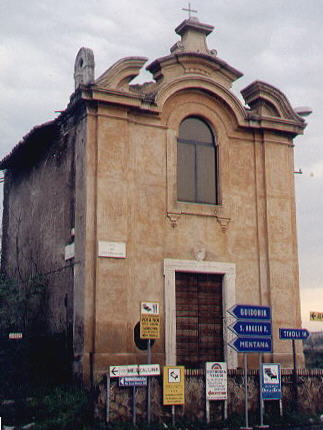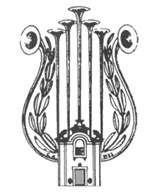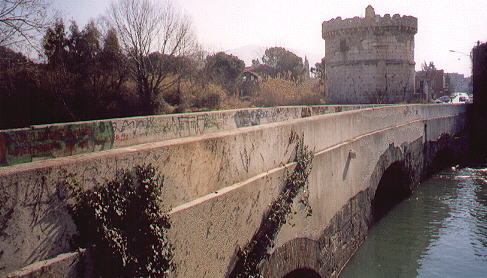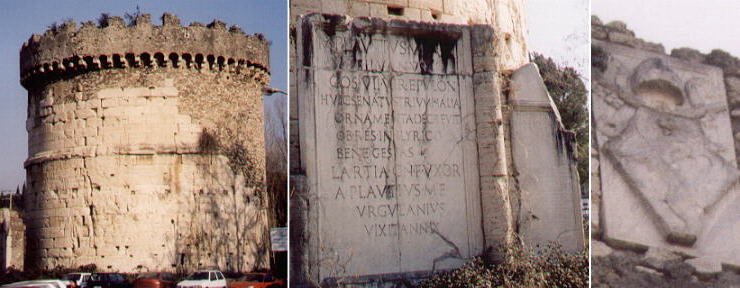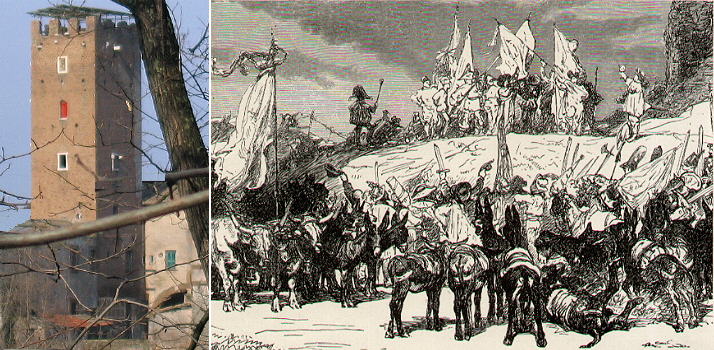  Ponte Mammolo (Book 5) (Environs of Rome) In this page:
Vasi opens his book on the views over the Tiber with three plates
devoted to the bridges which crossed the Aniene or Teverone a river coming
from Tivoli and joining the Tiber north of Ponte Milvio.
Ponte Mammolo was crossed by Via Tiburtina. The name comes after Mammaea,
mother of the Emperor Alexander Severus. In the description below the plate Vasi made reference to: 1) Via Tiburtina towards Rome;
2) Tavern and house of the guardian; 3) La Vannina (a farmhouse); 4) Via Tiburtina towards Tivoli; 5) Ruins of the tower protecting the bridge.
The small 1920 map shows the sites of 1) Ponte Mammolo; 2) a little church near Settecamini; 3) Ponte Lucano; 4) Tor Cervara.
In 1849 the bridge was blown up by the French troops in the fight against Garibaldi who was defending the Roman Republic. In 1857 the bridge was rebuilt by Pius IX , just a few hundred yards from the old one. The bridge was damaged in 1870 and rebuilt again in 1871. The old bridge was eventually repaired and with the help of Vasi's plate and using the little farmhouse (la Vannina Casale) as a reference point one can find the old Ponte Mammolo hidden by trees and modern buildings.
A little Church
Near Settecamini a little 1728 church (S. Francesco) is now almost imprisoned by traffic signs. The church shows up in the logo of the local band named after Arturo Toscanini.
Via Tiburtina crosses again the Aniene a few miles before reaching Tivoli. The bridge is named after Lucanus Plautius whose family tomb stands immediately after the river.
The circular monument was turned into a small fortress in the Middle Ages and its military use for many centuries afterwards
is confirmed by a coat of arms of Paulus II (1464-71). It clearly reminds of Sepolcro di Cecilia Metella.
Unfortunately the location, which once was very picturesque, today is spoiled by the industrial development of the area between Rome and Tivoli.
Piranesi dedicated to Ponte Lucano one of his etchings, but I do prefer an early XIXth century painting (click here).
Tor Cervara
Tor Cervara, a tall medieval tower near an abandoned tufa quarry on the Via Tiburtina, was the site of a carnival which was celebrated by the German artists living in Rome on the 1st of May, a day of joy across the Rhine, where they solemnized the
new season. It was a sort of burlesque exhibition of pagan rites, to which most of the foreign artists gladly participated. It had its dignitaries, its militia, its corporations of musicians, of high priests, of cooks, of poets, of master of ceremonies all dressed up in grotesque costumes.
Next plate in Book 5: Ponte Nomentano
Go
to |
All images © 1999 - 2003 by Roberto Piperno. Write to romapip@quipo.it
